So you are planning to go on a backpacking adventure, but ask yourself: what backpacking gear do I need? Well, this ultimate backpacking checklist has it all laid out so you have everything you need.
When going on a backpacking trip, the goal is to keep your backpack as light as you can! What most people forget, is that every small, light item can add up really quickly.
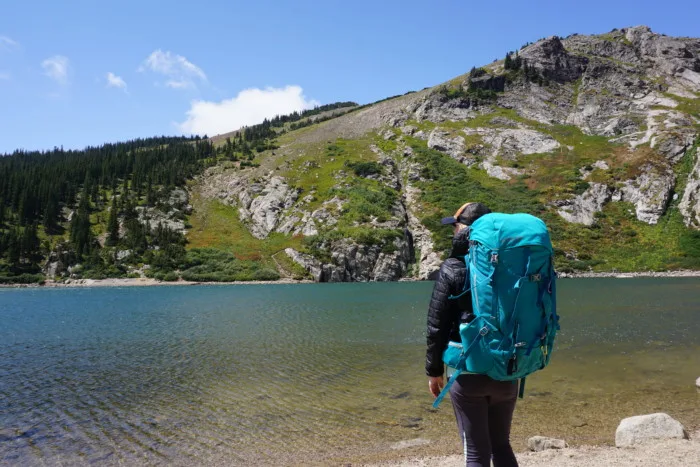
So suddenly you find yourself with a 60lb pack and it prevents you from enjoying yourself. We have put together the ultimate backpacking checklist of items we think are essential to make your backpacking trip a success!
But in addition to the backpacking essentials, we also include a list of items of optional “luxuries” that might be of interest. Our line between what is essential and what is a luxury may be different than yours so feel free to tailor your pack to accommodate your needs.
Because, after all, backpacking is about having a good time, so packing a few special items can make your evenings at camp more enjoyable.
In this ultimate backpacking checklist, we are going to go over all the essentials you need for your backpacking pack. If you are simply just looking for a checklist to get your backpack ready for your next adventure use our —> Free Ultimate Backpacking Checklist.
This post may contain affiliate links. Disclosure policy.
Essential Items | Ultimate Backpacking Checklist
(Links included to our favorite products)
Backpacking Pack:
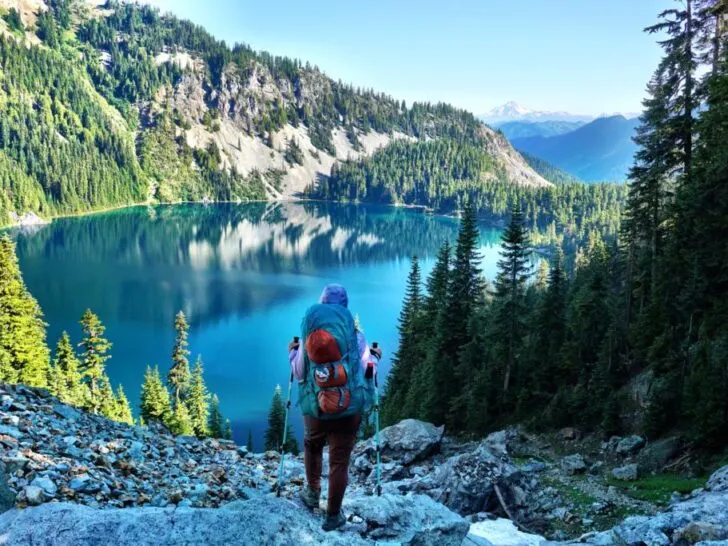
One of the essentials for backpacking is, of course, a “Backpack”. But it isn’t as easy as just picking up an old Jansport and throwing all your favorite gear inside.
You will need to find the right backpack that fits your body type and shoulder straps that can keep the gear close to your body.
Plus it’s important to find the right liters to fit all your gear whether your on an overnight trip or going on a multi-day backpacking adventure. Having the total weight be proportionate to your body weight can make all the difference to whether or not you enjoy your first backpacking trip.
We highly suggest the Osprey Exos For Men and Osprey Eja For Women.
Sleeping Bag:
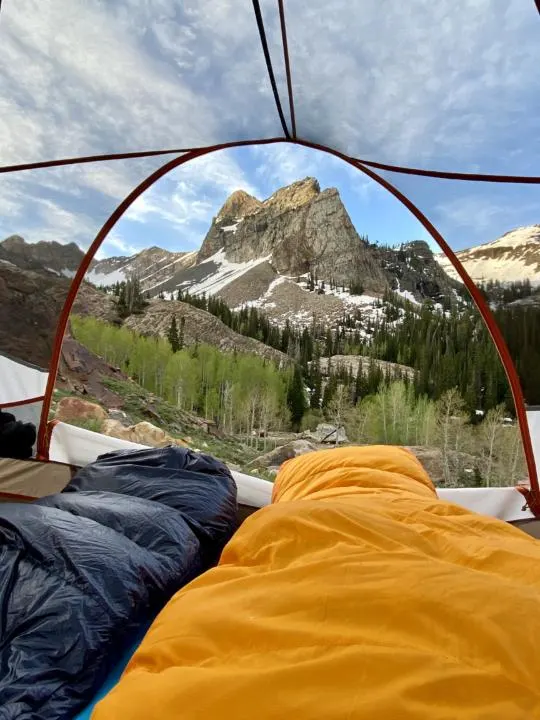
The second most important thing to have when on the ultimate backpacking checklist is a sleeping bag. There are many different factors to consider when picking the right sleeping bag for a backpacking trip such as weight, size, temperature ratings, etc.
I personally have a ultra warm sleeping bag rated to 0 degree Fahrenheit. Therefore, even if the weather forecast says it will be warm, I can always drap my sleeping bag over me and kick my leg out or have other ways to keep myself cool.
Check out our article –> How To Choose The Right Sleeping Bag
Sleeping Pad:
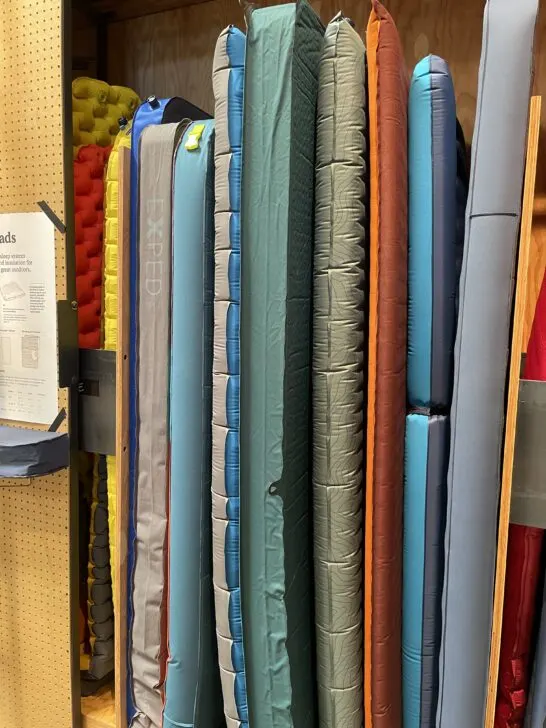
A sleeping pad can be optional if you are trying to cut weight, but if comfort is not something you want to sacrifice when it comes to sleeping, I would highly suggest finding a lightweight pad. Our favorite sleeping pad is the Big Agnes Q-Core.
Tent or Hammock:
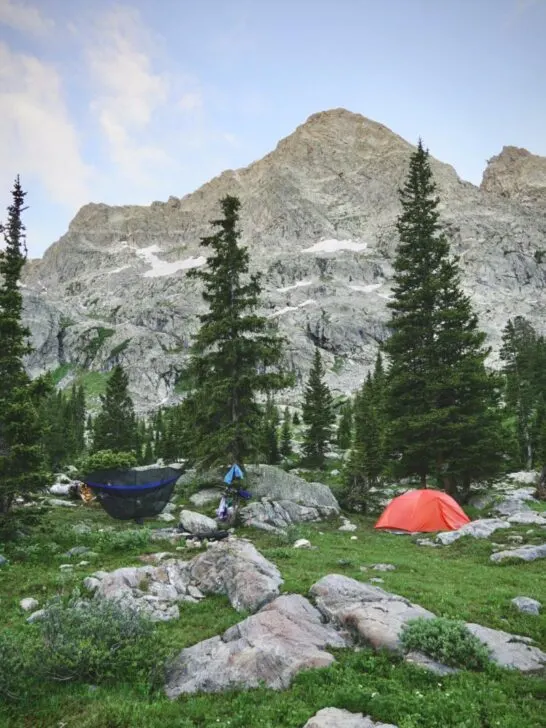
Unless you plan on being without shelter, you will need a tent or hammock camping setup. This will be up to your personal preference. {Read more about the benefits and disadvantages of tent camping versus hammock camping}
Jake and I prefer to have a tent so we can sleep side by side and have a place to hang out comfortably in bad weather. One of the lightest tents on the market is the Big Agnes Copper Spur (which is the tent we currently own).
But a hammock setup can be much lighter than a tent, and many people have ditched their tents in favor of hammock camping.
Water Bladder or Water Bottles:
Water is single-handedly the most important item to have on a backpacking trip. If you aren’t hiking along a water source, you will need to carry enough water to last you the whole trip. Water will most likely be one of the heaviest items in your pack, but it’s something you can hike without.
Our personal favorite water bladder is the Camelbak Crux 2L.
Water Filter:
If you are hiking along a water source, we highly suggest the Platypus Gravity Works Water Filter. The Platypus Gravity Works is one of our favorite water filters because it is super easy to use.
It will filter your water simply with gravity and will significantly help limit your pack’s overall weight if you can just filter water along your route.
But even if you aren’t hiking along natural water sources, you should always carry a way to filter clean water in case of an emergency such as iodine tablets, Sawyer Squeeze or LifeStraw.
High Energy Food:
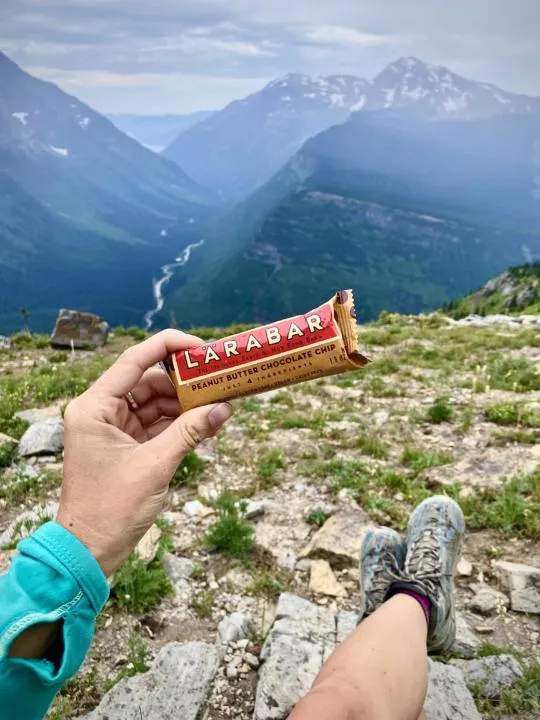
When backpacking, it is a good idea to have high-energy/high-caloric foods (trail mix, energy bars, jerky etc.) that don’t need refrigeration. If you are hiking for a long duration, you are most likely burning a lot of calories, therefore you will want to replenish your body to keep your energy up.
The best foods are ones that have a high caloric density (calories per ounce) or dehydrated foods that eliminate water weight. We personally love the Cookie-Dough Larabars and the Wild Zora Meat & Veggies Bars.
Backpacking Meals:
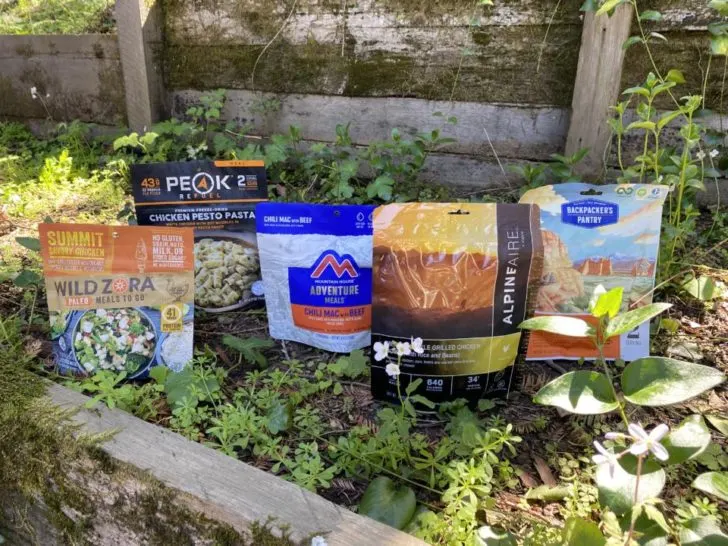
Next on the list is planning your backpacking meals. We suggest just bringing dehydrated foods that just require boiling water.
Our favorite backpacking meals are by Peak Refuel. A flavor we are beyond impressed with is the Chicken Pesto Pasta! They also have a breakfast scramble too, if you are looking for a hardy breakfast.
But if you want to avoid bringing a cookstove altogether, there is a growing movement of hikers cutting the weight of a cook set and just eating cold meals.
Check out our post Best Backpacking Meals for a breakdown of different meal options.
Sunscreen:
Unless you are hiking somewhere where the sun doesn’t shine, packing a small bottle of sunscreen is a must. We find that bringing just a small bottle or one of those sunscreen sticks is the best way to save weight.
But you will have to evaluate how much exposure you will have based on clothing, weather, and tree cover.
Hiking Footwear:
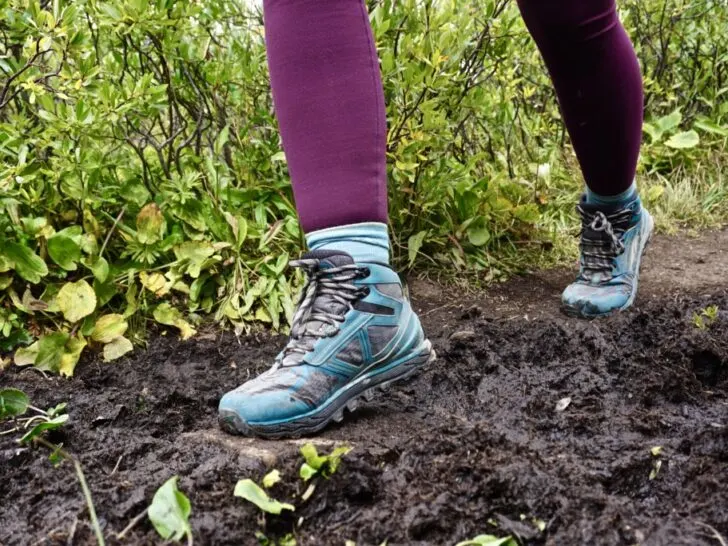
We’d suggest researching the conditions and duration to plan accordingly with your footwear. For shorter less rocky hikes, we find that breathable sneakers or mid-height boots are totally adequate. But for longer, more rugged hiking, it’s best to have a pair of durable high-top or mid-boots.
Read our review about the Altra Lone Peaks RSM, we use them on EVERY hike & backpacking trip!
Hiking Socks:
We think it is important to have sweat-wicking, odor-reducing, blister-free socks on any backpacking adventure. Therefore, you can wear the same sock again, day after day, rather than adding a new pair for each day.
The best material for socks is wool because of its combination of warmth, quick drying, and resistance to odors. But we do suggest bringing 1 extra pair in case yours gets wet or dirty.
You will find Jake and I often rocking Smartwool Socks.
Undergarments:
Picking the right undergarments is important. We suggest only bringing enough for the duration of your trip. Bringing too many can add extra weight.
ExOfficio is a solid brand that has built itself a name in the hiking and backpacking community. It has great breathability and quick-drying capabilities.
Clothing Layers:
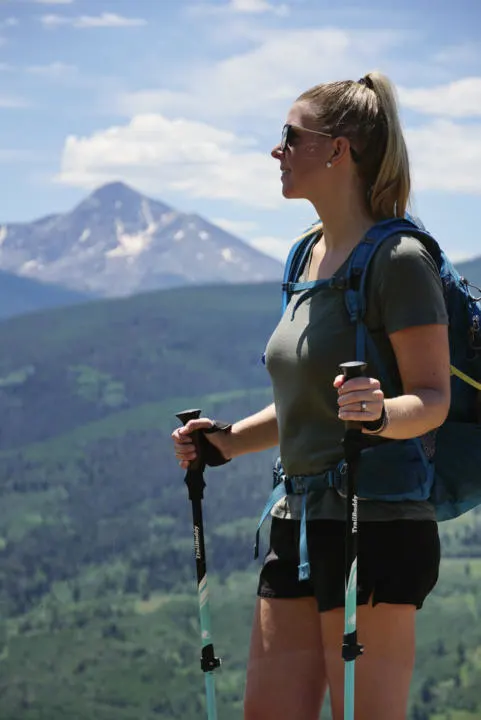
Picking the right layers to pack on a backpacking trip is one of the most important items on the ultimate backpacking checklist.
Check the weather for your trip and plan accordingly. And remember, the temperatures always drop at night no matter where you set up camp. Plan to bring extra layers for both top and bottom (preferably ultralight).
Also, weather can be unpredictable, so try to plan for all types of weather. For example, Jake and I always bring a rain jacket and use it as an extra layer for those colder nights.
Some of our favorite hiking brands are Unbound Merino, IsoBaa, Icebreaker, and Smartwool.
Headlamp/flashlight:
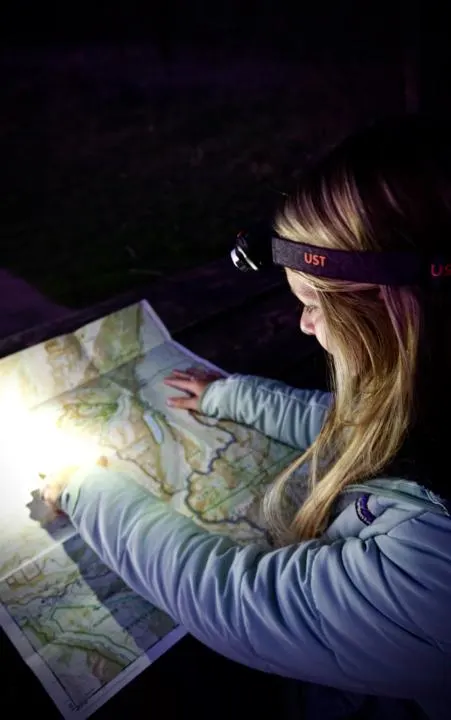
A headlamp is pretty essential on the ultimate backpacking checklist. Camp can get dark, so having a headlamp or flashlight is super helpful to see your way around.
Toilet Paper:
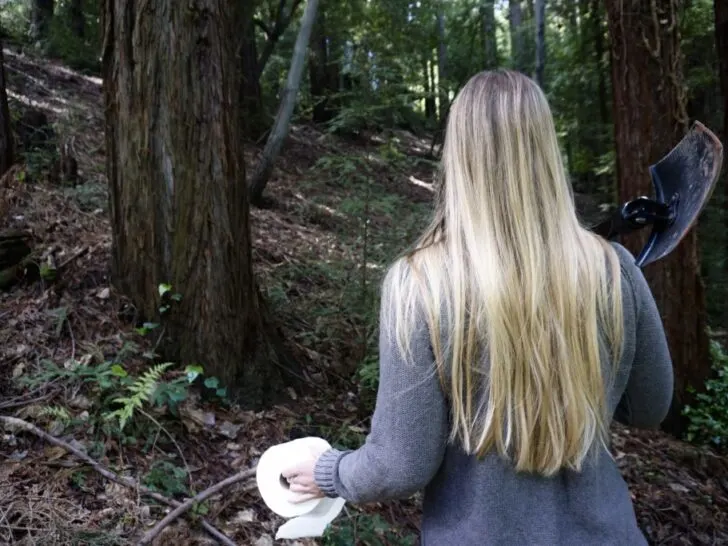
Remember to leave no trace when going to the bathroom in the woods. So please don’t leave used TP around!
We suggest getting biodegradable/compostable toilet paper. You can usually find it sold for RV or marine. But just because it’s biodegradable doesn’t mean you don’t need to follow proper disposal methods.
Check with local park authorities or land management for how to properly dispose of used TP. Some ecosystems can easily handle TP buried in a proper cathole, but other places may require you to pack out all used TP.
What I suggest for women is bringing an extra ziplock baggy for dirty toilet paper for going number 1.
First Aid Kit:
One of the most important things to have in your hiking pack is a first aid kit. You always want to be prepared in case of a medical emergency.
Therefore a small first aid kit is essential on the ultimate backpacking checklist. With even just a small collection of items, you can be prepared for lots of common trail injuries.
Emergency Blanket or Emergency Shelter
Another item I like to have in my backpacking gear is an emergency blanket.
Especially if my overnight trip has any river crossings. Sometimes you have mishaps and slip in the water and all your gear gets wet. And you might not have enough daylight left to get your gear dry.
Therfore, having an emergency blanket that is water repellent and can reflect your heat might be just the item you need when on a backcountry hike.
If you have paracord you can also make it into an emergency shelter to keep you dry.
Prescription Medications:
When thinking about what backpacking gear do I need? Don’t forget to bring any essential medications with you.
Permits:
Most hikes that require a permit, often times require you to carry a physical copy to show a ranger along the hike.
Photo I.D.:
A lot of times if you do need a permit, you need to prove that the name on the permit is you. I also like to carry an I.D. in case of an emergency.
Cash:
Cash is always a good idea to have in case of an emergency.
Rodent Resistant Bag or Bear Canister:
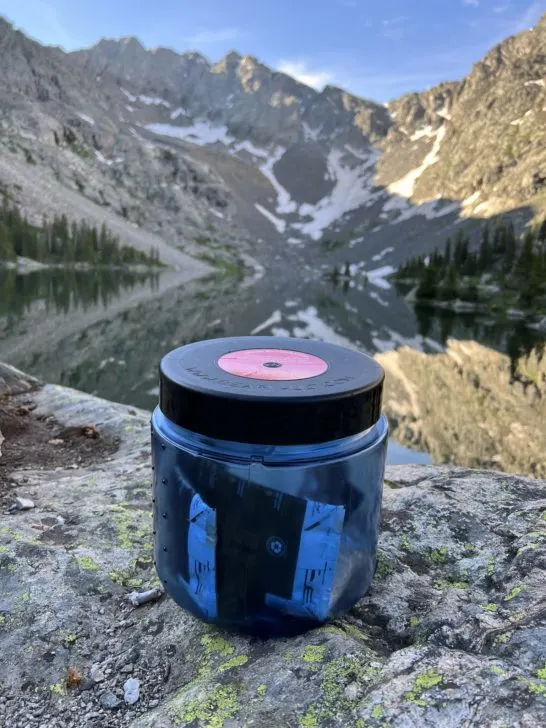
Rodent Resistant Bag or Bear Canister are a must-have on the ultimate backpacking checklist when camping in bear country. Check the area you are backpacking, a lot of times there are rules that require you to bring either of these two items.
Plus you don’t want to lose your food supply to pesky animals. And aside from bears, little rodents will chew through tents or packs, so it’s best to be prepared.
Optional Items | Ultimate Backpacking Checklist
(Remember, everything adds up! So here is a list of items that might make the list for some but not for others.)
Jetboil/DIY Alcohol Stove/MSR Pocket Rocket:
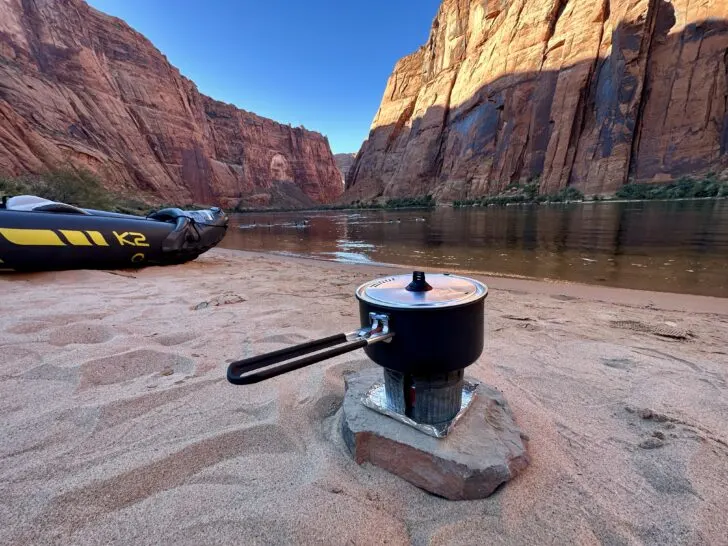
If you are like us and love a hot meal after long hikes, you are going to need a way to cook your own food. These 3 backpacking stoves are what we recommend for cooking hot meals at night.
The Jetboil can boil water in just over 3 min. A DIY Alcohol stove is what Jake and I use, and it works great, but making it can be a challenge. Or the MSR Pocket Rocket is an ultralight backpacking stove that takes up next to no extra room and brings water to a boil in just over 3 minutes.
For other great backpacking camp stoves, check out our post: Best Camp Stoves For Backpacking
Cookware:
If you use the MSR Pocket Rocket or alcohol camp stove, then you will also need a nice lightweight pot to boil water or cook your meals.
Silverware/Plates:
You are going to need a way to eat any of the food you make. I’d try to avoid bringing plates if you can and only bring silverware if you plan to have bagged meals and eat straight from the bag or cooking pot.
We personally suggest a Titanium Spoon Fork Combo. We’ve used plastic in the past and with thick meals they have broken on us.
Electrolytes:
It’s a good idea to replenish your electrolytes after a long hike. Sometimes water just doesn’t cut it. You can carry drinks with electrolytes, or better yet powdered drink mix or supplements.
Toothbrush/toothpaste:
Although I think this should be on the essentials side of the ultimate backpacking checklist, it won’t make or break your backpacking trip. This Aurelle TOOB Brush is an all-in-one toothbrush & toothbrush package.
Sunglasses:
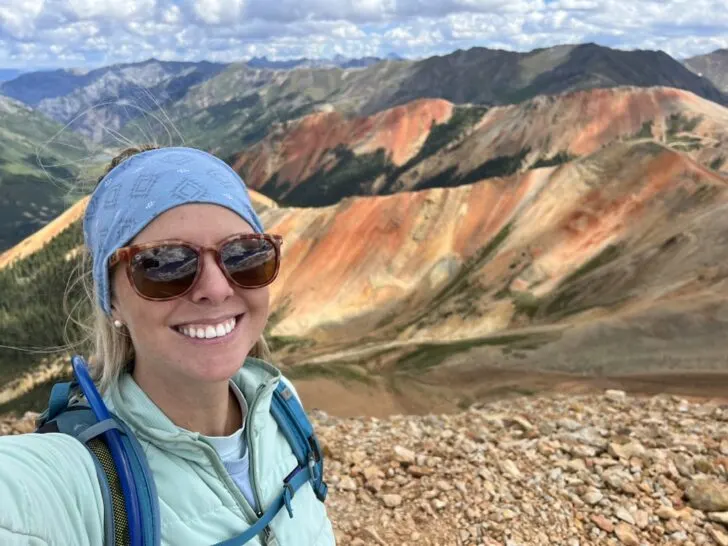
Sunglasses are pretty much essential for me because I hate squinting at the sun. Obviously, no one can choose the right sunglasses for you as they fit people’s faces very differently. But one thing I will suggest is to find polarized sunglasses to help protect your eyes from the sun better!
Chapstick:
I always pack along a chapstick when backpacking to protect my lips from the sun. And obviously, it can be a real lifesaver if you get dry lips along your trip. The SPF RX Mango Chapsticks are Jakes and my favorite lip balm.
Hat:
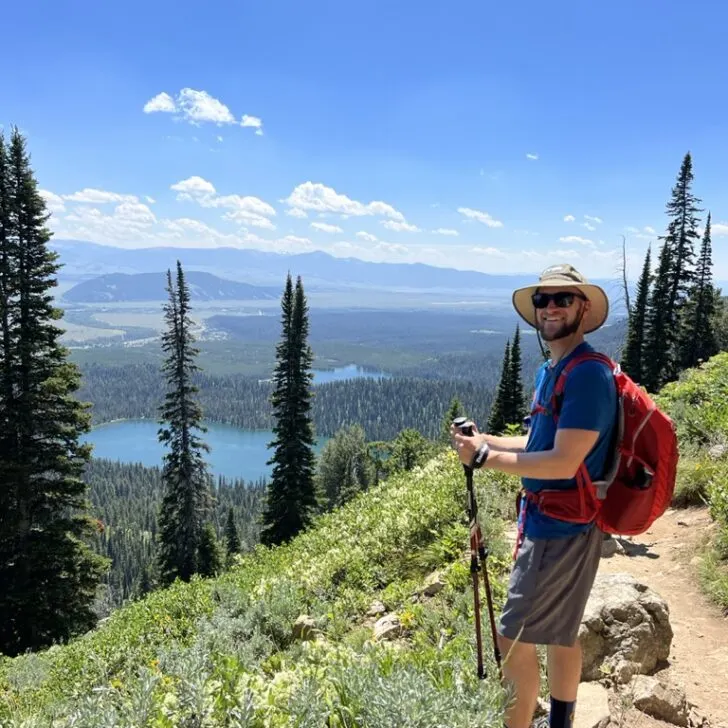
Depending on the weather, you might want to bring a ball cap or sunhat to protect you from the sun. Or a winter hat to keep your head warm at night.
MoleSkin:
It can be a good idea if you are prone to blisters to bring moleskin to protect your feet, many people include this in their first aid kit.
Backcountry Shovel or Human Waste Bags:
Backcountry shovel or Human Waste Bags are pretty essential on the ultimate backpacking checklist. When going to the bathroom in the backcountry it’s required to either dig a hole 6 inches deep and at least 200 feet away from a water source or pack it out in a human waste bag.
It can be quite a challenge to dig a hole deep enough with a stick you find off the ground. Therefore, we suggest bringing along a backcountry shovel or human waste bag.
Nano Puff:
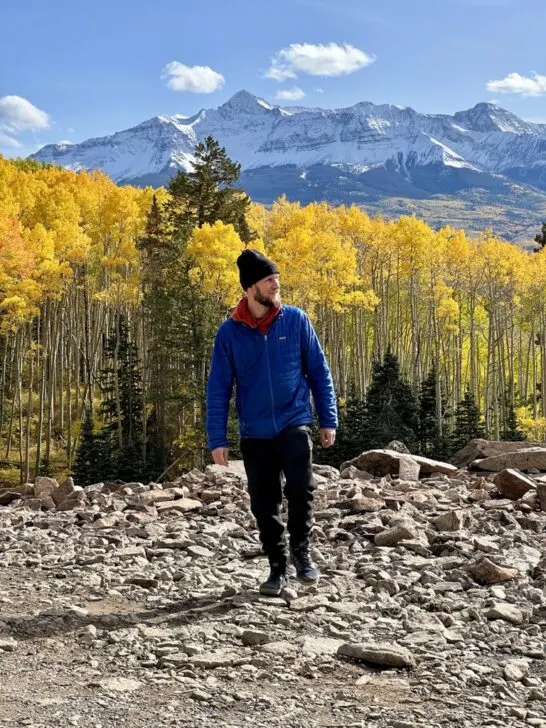
Jake and I don’t go anywhere without our Patagonia Nano Puff Jackets. They are lightweight, compact, and warm, therefore we think it’s the best layer to bring along on any backpacking trip.
Chaco’s, Teva’s, or Keens:
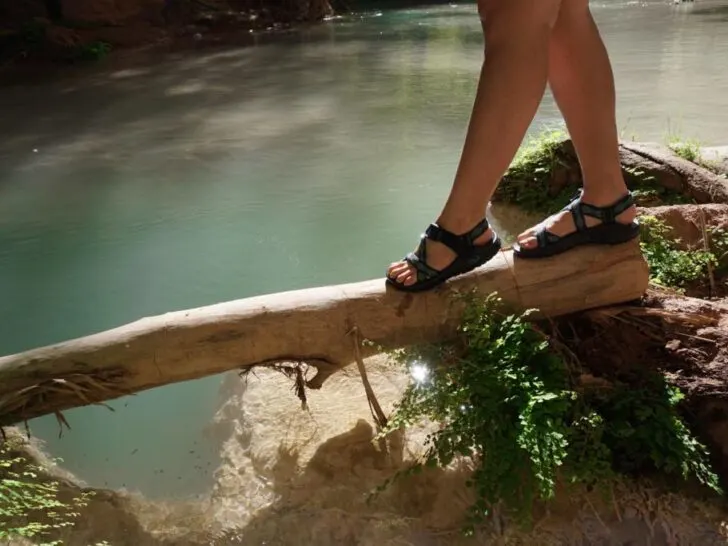
If your trip is through a river or water source, it might be a good idea to bring good river shoes to keep your hiking shoes dry. Check out our article –>
Read our gear review on Chaco’s or look into our post —> Best River Hiking Shoes
Backpacking Towel:
Backpacking towels are lightweight and dry quickly. If you will be swimming near a water source, this can be a nice lightweight item to carry along. Or if you are doing a multi-day trip, it can be nice to rinse off with a quick shower.
Ultralight Daypack:
After carrying your heavy backpacking pack all day it can be super nice to set up camp and leave your backpacking pack behind. You can then just pack a light daypack with the essentials and venture on.
Read our gear review on The Matador Freefly 16 Day Pack
Stuff Sack’s:
It’s easy to lose items in your backpack because it can be so big and deep, so I love using stuff sacks to organize my clothes, toiletries, etc. so they are easier to find! Plus they are lightweight, so there isn’t much added extra weight!
Dry Bag:
Dry bags are primarily for if you are hiking across a river or have a chance of hiking in rain and want to keep your valuables dry. For example, you will want to make sure your sleeping bag is dry, pair of dry clothes, electronics, etc. So plan accordingly with size as to what essentials you need to keep dry.
Hiking Poles:
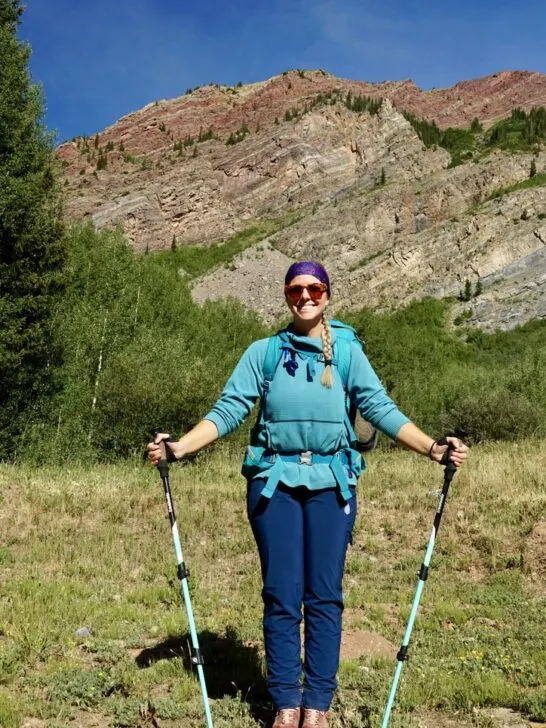
Hiking poles can be great to help support your knees and help keep your balance for long backpacking trips!
Hammock:
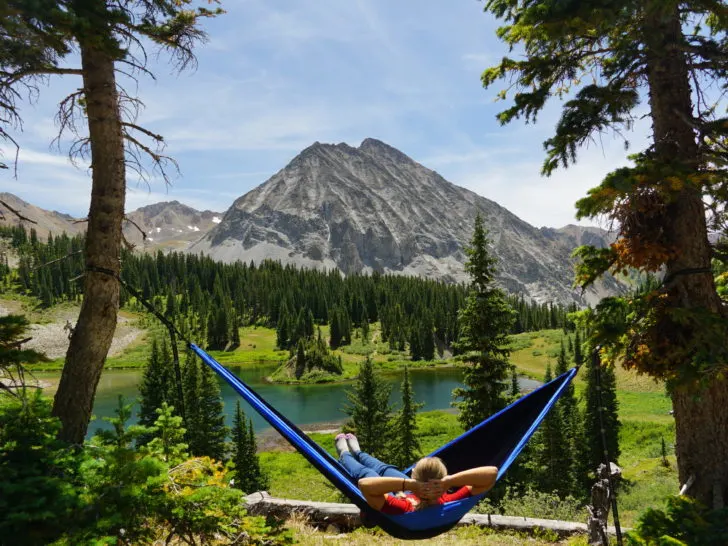
As mentioned above, some people bring a hammock to use as their tent. But Jake and I just like to bring ours along if we know we will have plenty of time to hang out and relax. But hammocks aren’t the lightest item to throw into your pack, so make sure you will really use it if you plan to bring it along.
Biodegradable Shampoo & Conditioner:
Protect the environment! If you plan to wash your hair, bring travel size biodegradable products! My personal favorite shampoo is the Sea to Summit Shampoo/Conditioner combo.
Biodegradable Soap:
If you are planning to cook at night and want to clean your dishes afterwards, use biodegradable products. Another great idea is to load dry paper towels with soap, so all you have to do is wet it when at the campsite.
Deodorant:
Deodorant is more of a luxury item on a backpacking adventure. So I personally wouldn’t suggest wasting valuable weight on this item, it may be necessary for some.
Hopefully, there is a stream or lake near where you can freshen up. Or use on-the-go wipes (more details below).
Hygiene Wipes:
I’m a huge fan of wiping up after a long days hike. And these on-the-go Good Wipes are just what you need. While you should still pack them out with you and not dispose of them on the ground, they are 100% biodegradable, plant-based, and hypoallergenic.
Imodium:
I know it sounds crazy, but if you are filtering water from a suspicious source, things can go wrong. So I like to be prepared just in case.
We like to just throw a few Imodium pills in our first aid kit in case of an emergency. Because having to dig a hole multiple times and quick out in the backcountry, doesn’t sound like a fun time.
Cards/games:
Again, cards are a more luxury item, but sometimes you can get bored once you get to your destination, so if you are up to carrying the extra weight a game is a fun idea to kill the time.
Rain Jacket or Poncho:
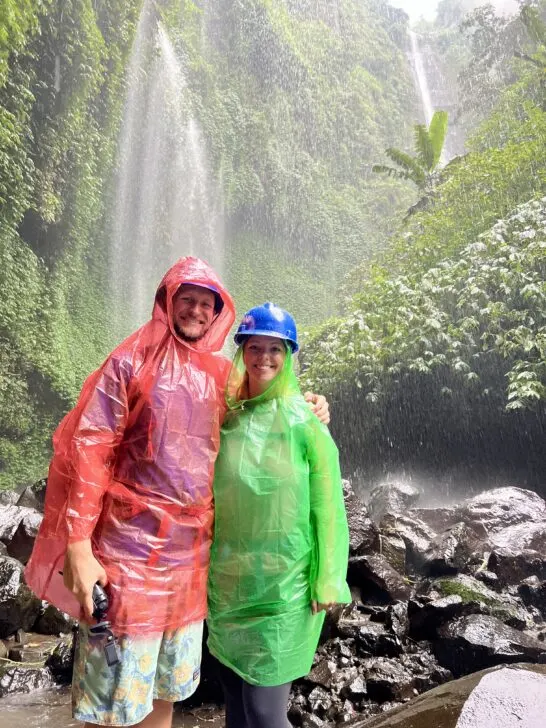
We almost always bring a rain jacket and/or poncho, for the purpose if it rains. This allows you to keep your under layers dry and everything inside your backpack. It can also act as an extra layer if needed.
There are rain covers that you can be used to cover your backpack. But Jake and I almost find it way cheaper and easier to carry a cheap poncho to just layer over us and our backpacking pack.
Neck Buff:
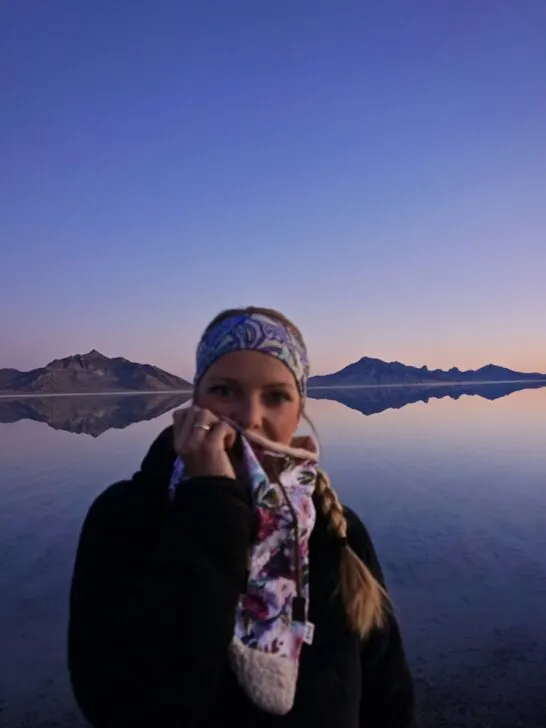
Neck buffs are pretty light and can add extra warmth at night! Or a bonus layer to cover your nose if you are using a drop toilet.
Bug Spray:
(Travel Size): Obviously, dependent on where you are backpacking.
Check out our post —> Best Insect Repellent For Camping
Mosquito Net:
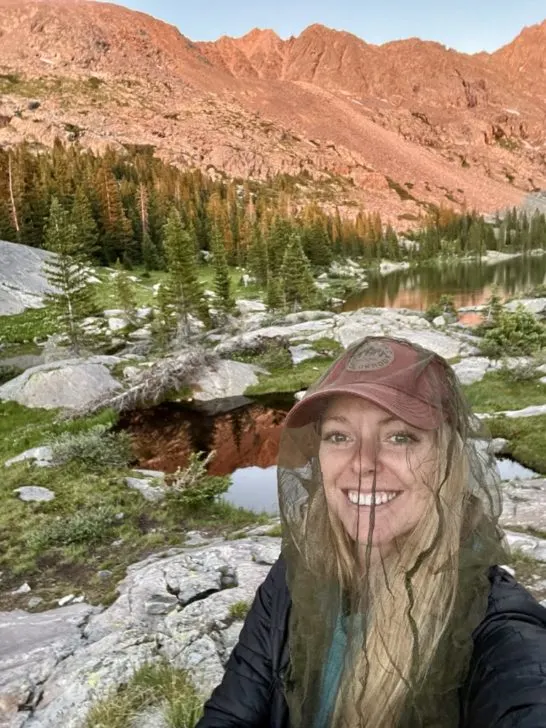
An item I’ve added after recent years of backpacking is a mosquito net. The one thing that has annoyed me on trips is a swarm of mosquitos around my head, so I always carry a mosquito net that goes over my face and it has really enhanced my experience out on the trail.
Battery Charging Pack:
Having a way to charge your electronics can be great if you use a GPS, love photography, need a phone in case of an emergency, etc! This Anker Power Bank, 20,000mAh Portable Charger is perfect to pack along to keep all your electronics charged for the whole duration of your trip.
Other great power banks to try are BioLite Charge 80 PD Power Bank or the Sunjack Power Bank.
Camp Pillow:
A camp pillow isn’t totally necessary for a backpacking trip, but it can make your night’s rest so much better. Plus, if it’s inflatable, it doesn’t take up much extra room in your pack. Therefore, decide if comfort is your main priority, and if so, pack along a pillow!
Backpacking Chair
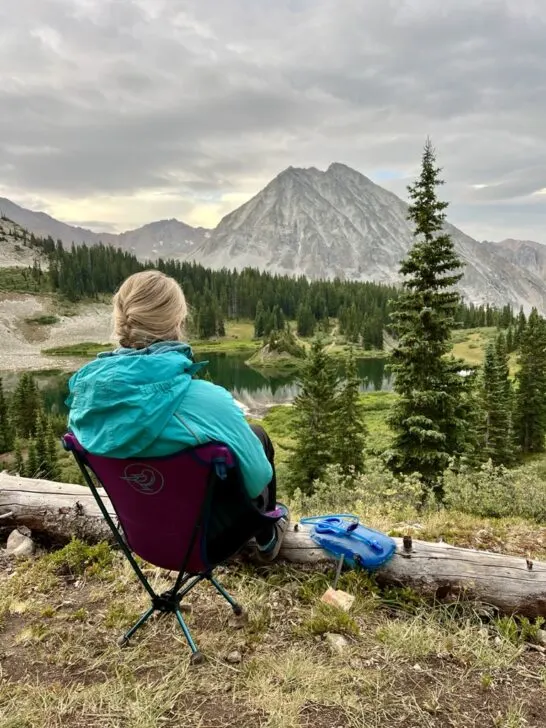
A backpacking chair is a newer addition to our backpacking set up. We really only bring it along on shorter trips, otherwise, the weight just isn’t really worth it. While I have the Backcountry Stoic Chair, I suggest going Ultralight and going with something like the Helinox Chair Zero.
GoPro:
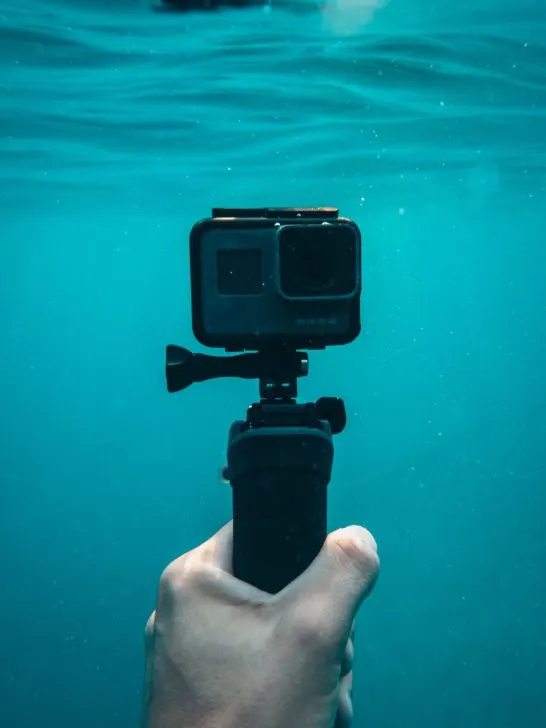
A GoPro is a fun idea if you are hiking near water or want a wide-angle lens for footage! We love our GoPro 11 because it has built-in stabilization, so you won’t have extra shaky footage.
Camera:
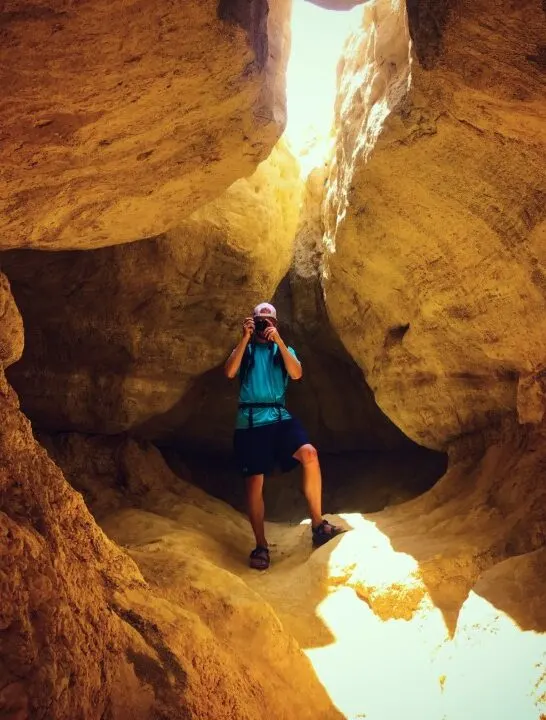
Obviously, this one is very optional since a camera can be very heavy, but we love photography! We love the Sony Alpha a6000 because it is one of the lighter-weight cameras on the market.
Book:
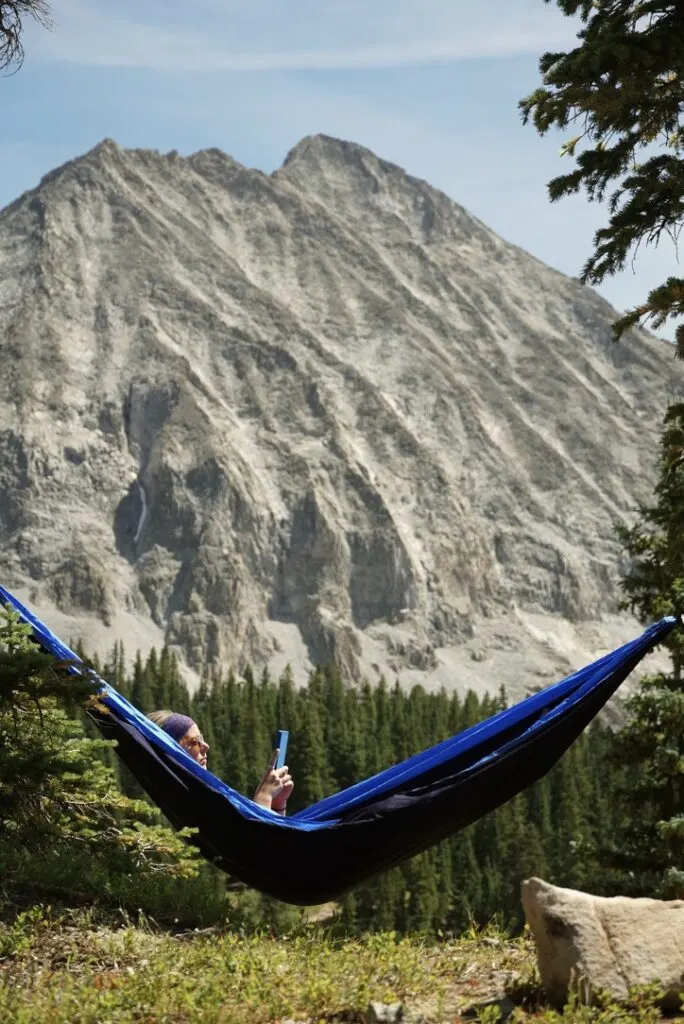
If you have some leisure time, it might be a good idea to bring a book, although books can be heavy. Consider bringing a kindle, so you won’t bend the pages and it will have a much slimmer fit in your pack.
Pocket Knife:
A knife can act as a safety mechanism, cutting food, or anything you might need.
Alcohol:
Obviously, this one is very optional and will add extra weight. Some unique ideas for bringing along alcohol on a backpacking adventure is bringing small box wines, nips of liquor, or hot cocoa with/ baileys.
Lighter/matches:
If you plan to have a fire and fires are allowed where you are camping, a lighter or matches are easy to carry along. Follow fire safety: always make sure the fire is completely out. This can be hard if you are not near a water source.
Kleenex:
I don’t know about you, but my nose always runs when I am on a hike. So I always pack a few Kleenex’s to have with me.
Hand-sanitizer:
It can be nice to wash your hands after using the bathroom or cooking.
Gloves:
While hiking is cold weather, gloves are super nice to keep your hands warm.
Hand Warmers:
If you plan to camping in winter or lower temperatures, consider bringing hand warmers.
Espresso Beans:
If you are a coffee drinker, chocolate-covered espresso beans are an alternative way to cut down on weight. Plus they don’t require you to heat up water in the morning. It can also be a nice pick-me-up on the trail if you get tired.
Collapsible Pour-over Coffee Drip:
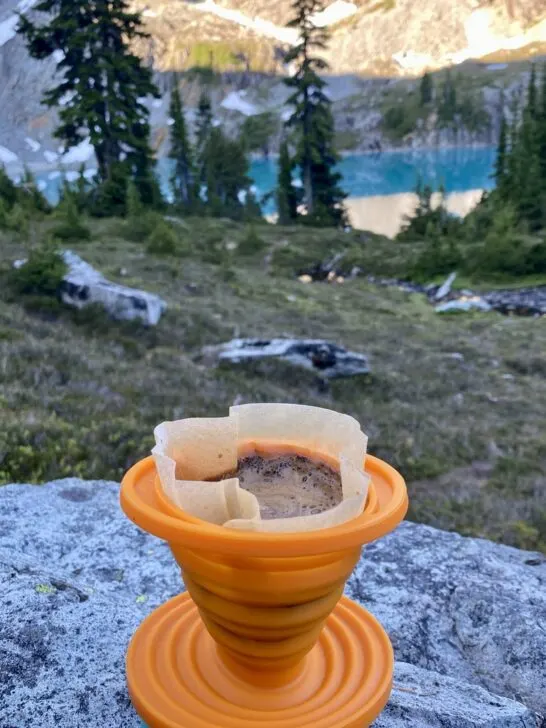
Or if you need that hot cup of fresh coffee in the morning. This ust Collapsible Pour-over Coffee Drip will get you exactly that! Don’t forget the filter too! And of course, you will need to pair it with a mug to drink it our of.
Duct Tape:
Duct tape is a pretty important item to have in every day life, and it can also be helpful out on the trail. Maybe your tent pole snaps in half or the sole of your shoe come unattached? Duct tape is always the easy fix for small little issues and can be your own little repair kit out on the trail!
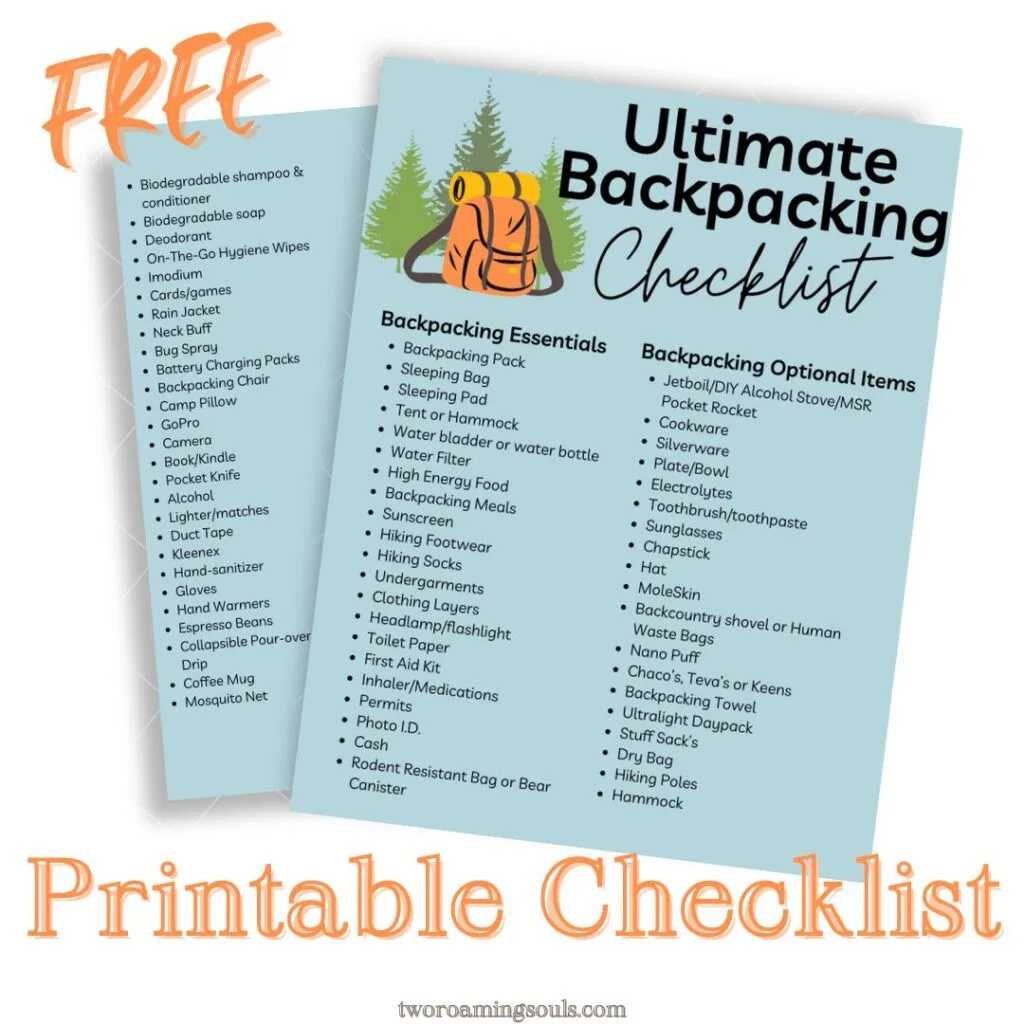
Download Our Free Checklist:
Takeaway | What Backpacking Gear Do I Need?
Hopefully after reading this, we answer your question of “what backpacking gear do I need?”
Backpacking is such a great way to get in touch with nature. You don’t need to pack an outfit for every day, because no one is judging you out there! Try your best to only bring the things you really NEED versus want.
You are getting out there in nature, so why not embrace it?! The essentials are all you need to make a successful backpacking trip, added items are just a bonus!
Let us know what you think! What are some items you must have with you on your backpacking trip?
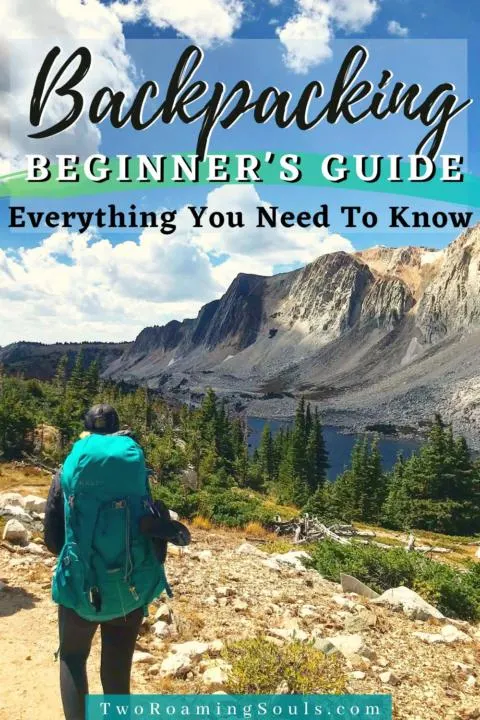
Also, if you are a beginner backpacker, be sure to check out our post: Beginner’s Guide To Backpacking
Save This ‘Backpacking Checklist’ For Later
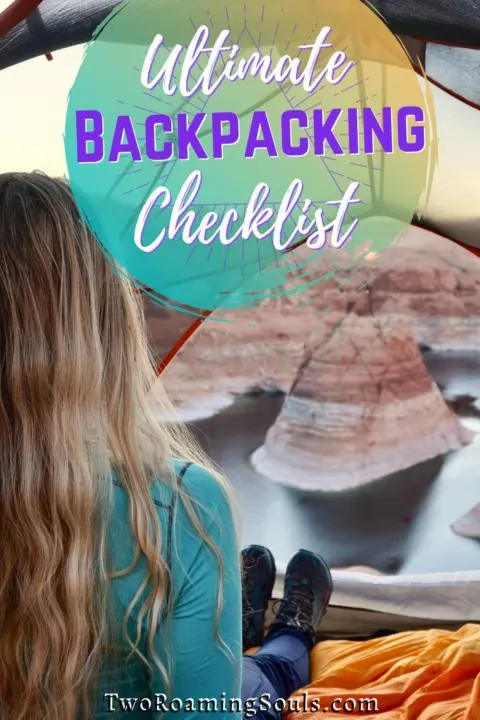
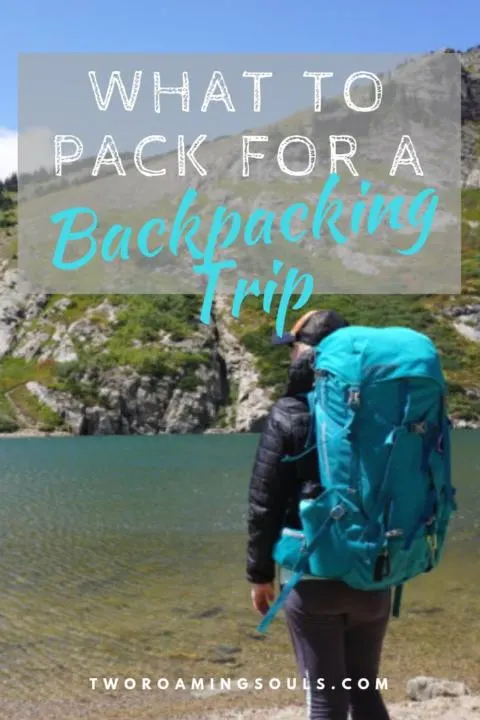

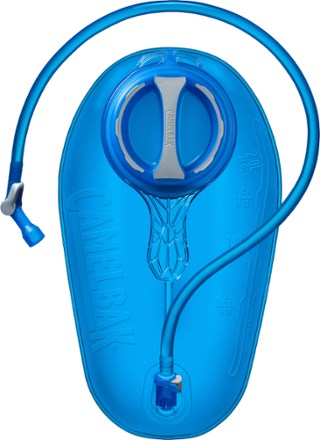
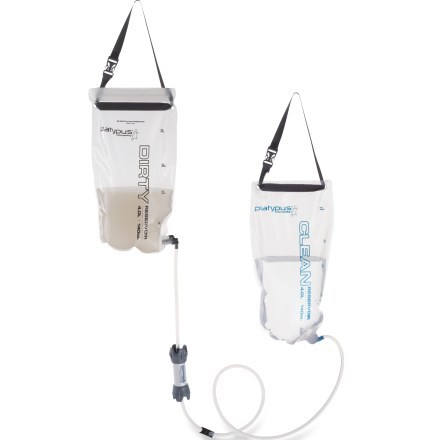
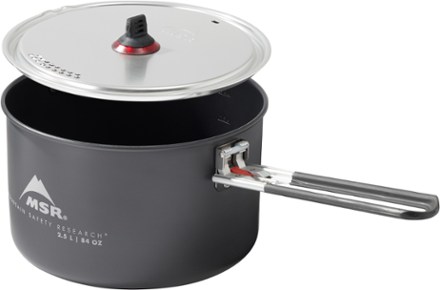
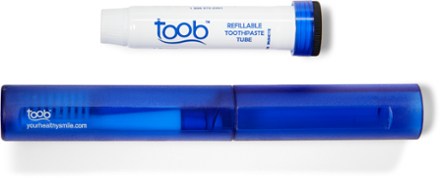

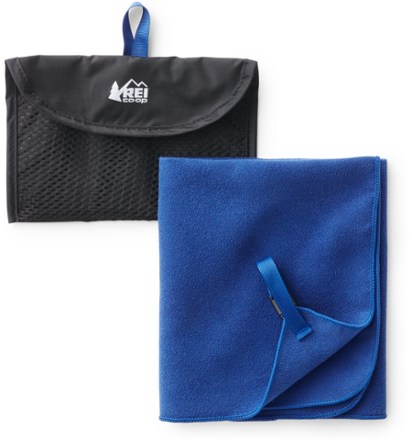
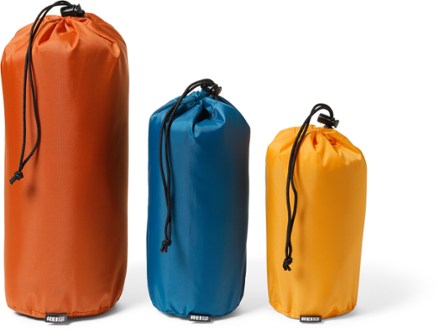
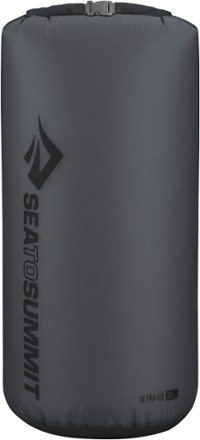
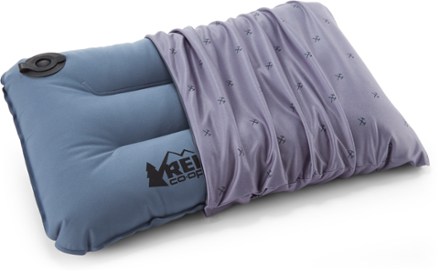
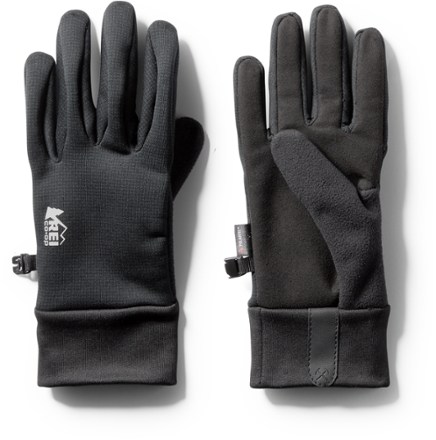
Halls Creek Canyon Backpacking Guide | Capitol Reef National Park - tworoamingsouls
Wednesday 3rd of May 2023
[…] out our Ultimate Backpacking Checklist for all essentials for any backpacking trip. But in addition, river canyon hikes, such as this, […]
Epic Things To Do In Bend, Oregon | 1-Week Itinerary - tworoamingsouls
Thursday 6th of April 2023
[…] If backpacking is of interest, check out recreation.gov to snag a backpacking permit. Don’t forget to pack the backpacking essentials. […]
How To Plan A Trip To Havasu Falls | Ultimate Guide - tworoamingsouls
Thursday 6th of April 2023
[…] Ultimate Backpacking Checklist […]
The Beginner's Guide To Backpacking - tworoamingsouls
Tuesday 4th of April 2023
[…] Ultimate Backpacking Checklist […]
Conundrum Hot Springs | Ultimate Backpacker's Guide - tworoamingsouls
Monday 3rd of April 2023
[…] […]